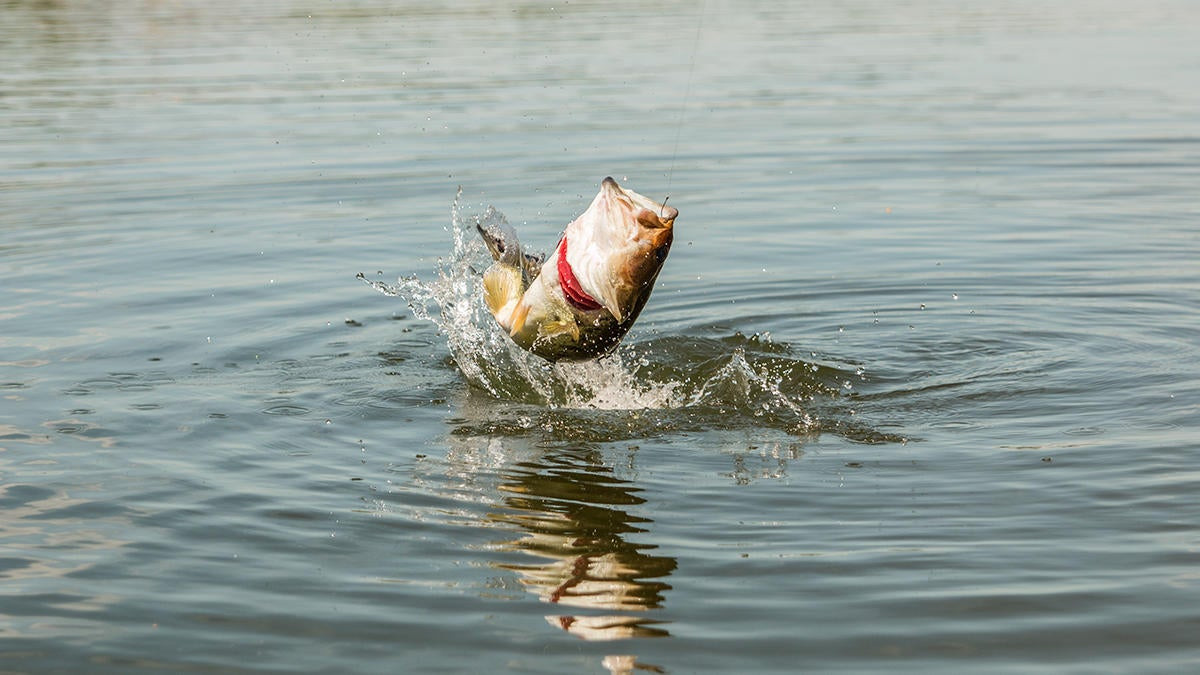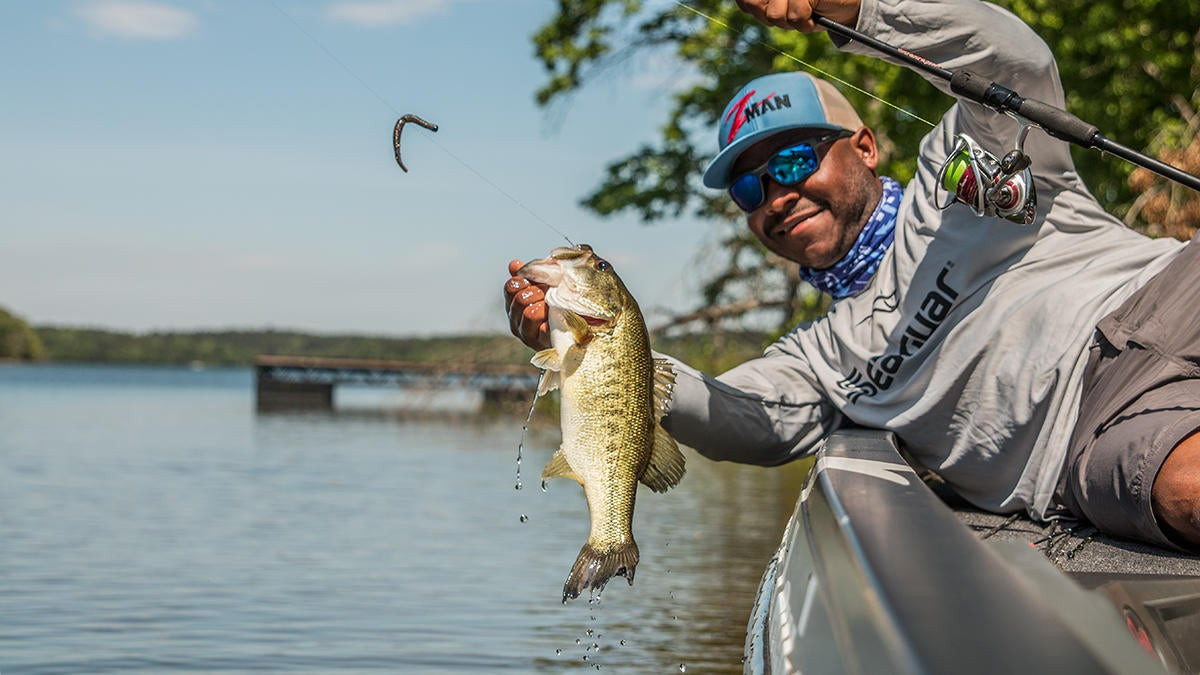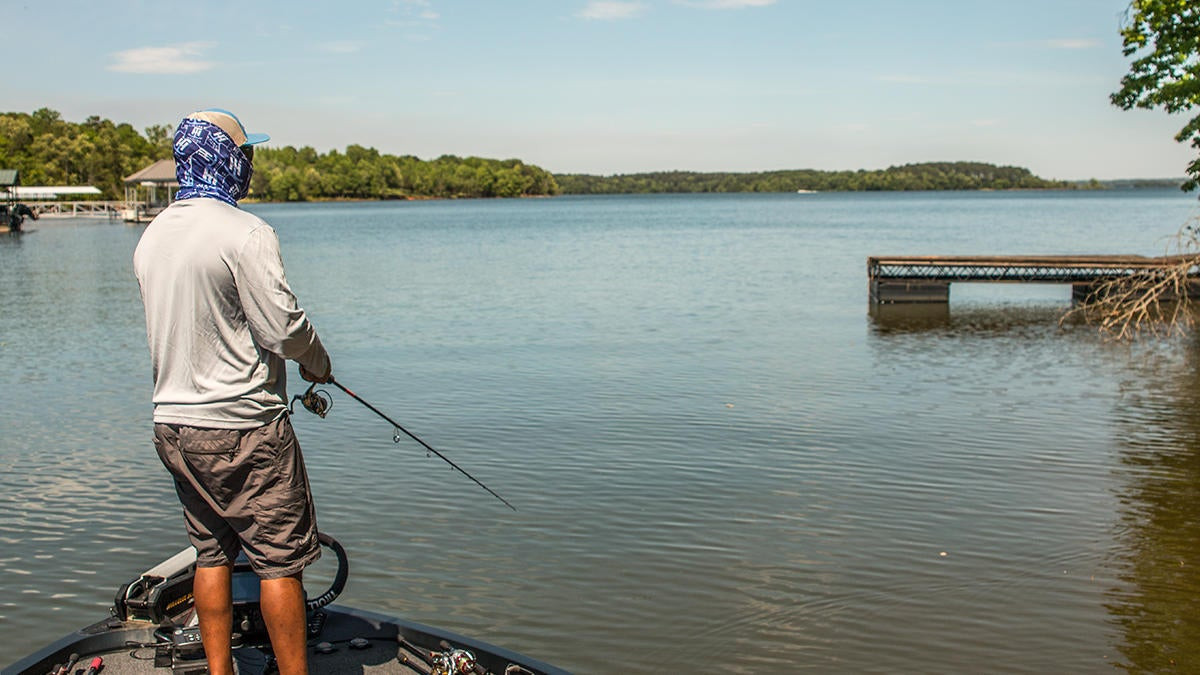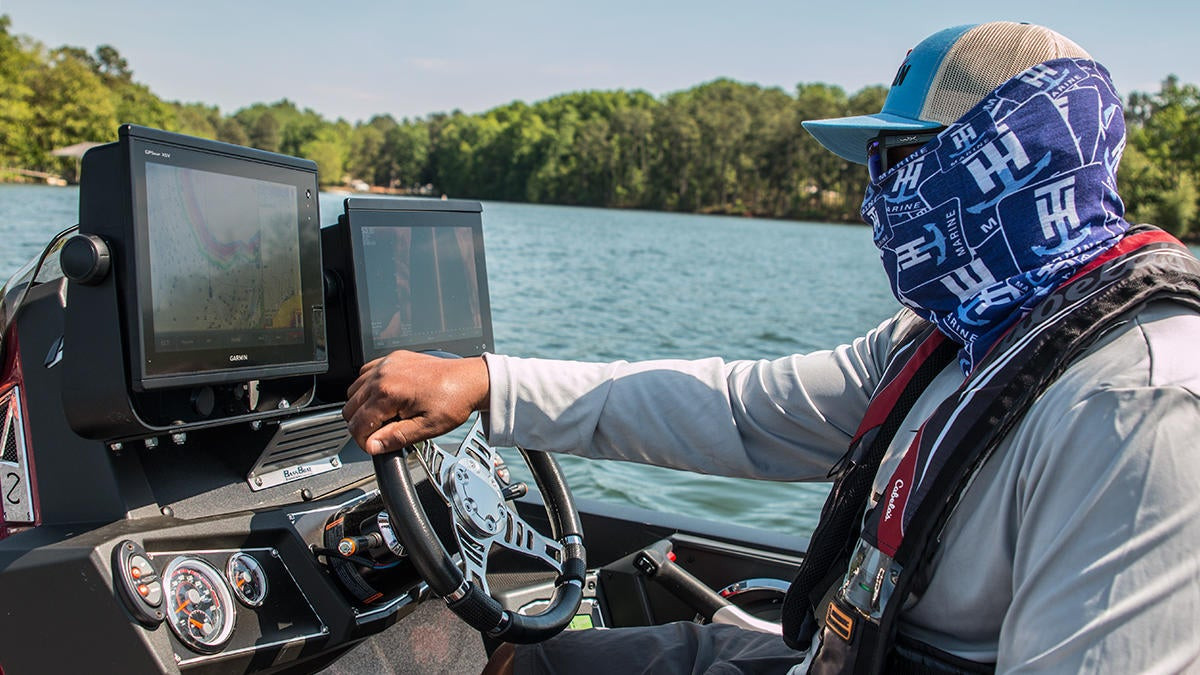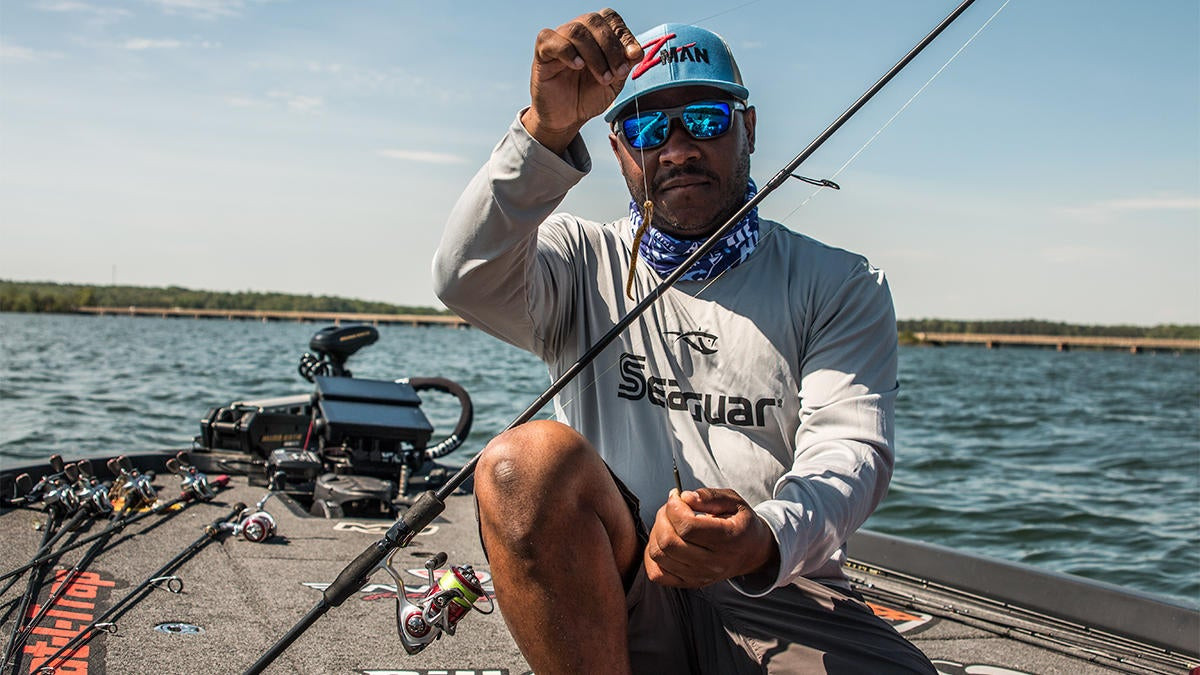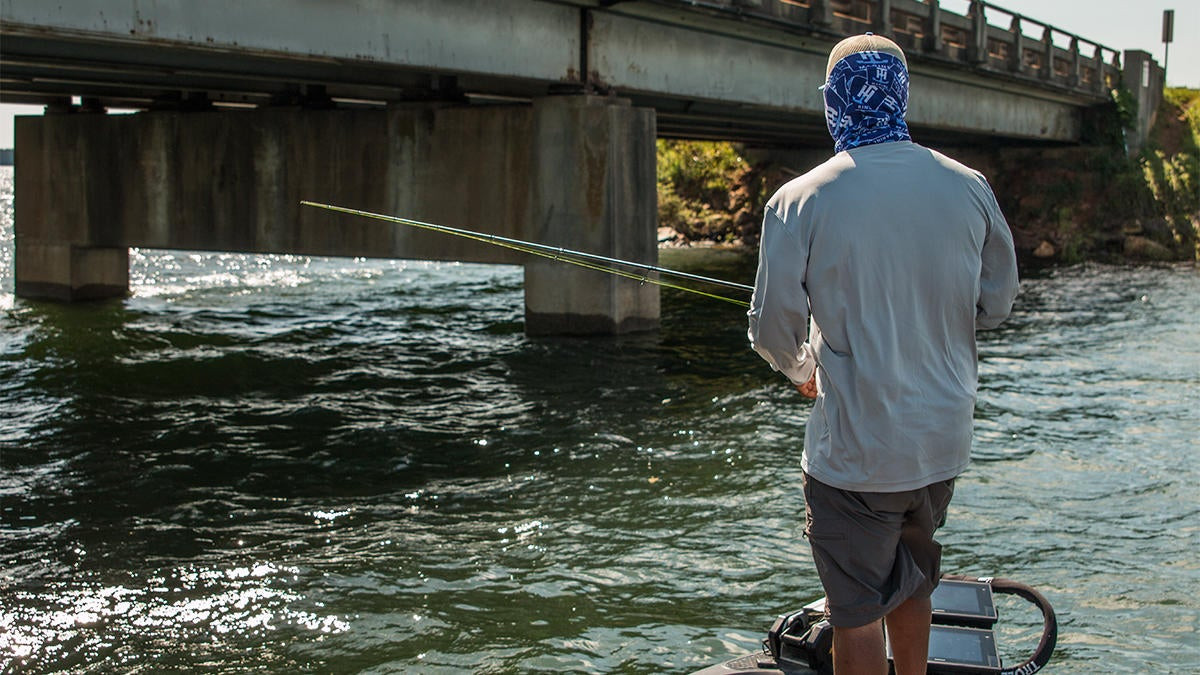The bass fishing is, or is about to become, red hot throughout much of the country. With big bass finally leaving their winter haunts and heading for shallower water, they will soon be much easier to catch and locate. Whether your particular area is early prespawn, spawn or freshly post-spawn right now, you have an excellent chance of catching your personal-best bass over the next few months.
It’s not all sunshine and rainbows, though. As the weather continues to warm and more anglers begin to flood their favorite lakes, the increased fishing pressure can make the bite pretty slow at times. It might take some creativity to differentiate your offerings from what the fish are seeing nearly every day.
That’s where it pays to have a buddy who’s one of the best finesse fishermen in the world. I chatted with professional angler Mark Daniels, Jr. today and we started talking about some common mistakes he notices anglers making while fishing with light tackle and spinning gear. A detail-oriented angler who analyzes every cast he makes, Daniels laid out some incredibly helpful information during our conversation.
Too much action
It’s easy to get a little carried away when it comes time to hit the water for some spring bass fishing. You’ve been stir crazy all winter and you expect the bass to eat the paint off of any reaction bait you toss anywhere near their vicinity.
No so fast, cautions Daniels.
“I’ve noticed that less can certainly be more as far as your bait’s action goes,” Daniels said. “Look at the success of stick worms and the now-famous TRD. You can’t deny how deadly they are, but yet, they don’t have a whole lot of action. They’re purposely designed that way to create a very subtle and non-threatening profile to pressured fish.”
I’ve been in the boat during the spring with Daniels in the past; he certainly proved this point during our trip. He waxed ’em on both a Z-Man ZinkerZ and a Z-Man Finesse TRD. Both may not be adorned with a bunch of crazy appendages, but they sure do catch a bunch of bass.
It’s also interesting to watch Daniels work his spinning rod throughout the retrieve. While many other anglers may be trying to power fish and force reaction strikes, he’s very methodical and measured with spinning tackle in his hands.
“I can’t stress how important it is to avoid overworking your bait and rod tip,” Daniels said. “People love to shake that rod, man. But it’s not always necessary this time of year. You’re going to get most of your finesse bites right now when the bait is either falling or paused, so keep that in mind while you’re fishing. Stay patient and if you think you’re fishing too slow, slow down a little more. It can be frustrating at times, but when you catch a big bass, it’s totally worth it.”
Not enough distance or separation
You’ll likely notice most anglers relying on big flipping and pitching rods and heavy line when they’re dissecting shallow cover throughout the spring. Does it work? Absolutely, it does. But whether you’re combatting fishing pressure or a crazy spring weather front, breaking out the spinning gear is sometimes necessary.
When you do break it out, remember to be mindful of your distance to your target.
“I’m really big on keeping a healthy distance from whatever I’m fishing, especially this time of year,” Daniels said. “It greatly increases your likelihood of getting bites. You’d think spinning gear is only for clear water, but it can produce big-time in dirty water as well. You’ll get a bunch of bites other guys are missing but again, you have to keep your distance from your target. These bass are shallow and super tuned-in to everything, so they’ll spook if you get too close.”
He’s also a big proponent of making repeated casts and utilizing various casting angles.
“These are both very big deals to me,” Daniels said. “If there’s a big, isolated piece of cover and my gut tells me there’s a fish on it, I’ll make a half-dozen or so casts to it. It’s important to note, however, that with each cast, I’m constantly changing my angle. Try to bring that bait through the cover at a different angle every time. It’s crazy how that works, but I’ve seen it make an enormous difference for me on several different occasions.”
Not paying enough attention to mapping
We totally get it: Not everyone is able to have high-end electronics on their boats. There’s nothing at all wrong with that. Even if you lack the electronics, a simple paper map can pay big dividends in all phases of spring fishing.
Sure, the bass are shallow, so putting an emphasis on electronics may sound silly. But Daniels uses his Garmin units all day long in order to identify common travel routes for bass.
“My Garmin mapping is a lifesaver this time of year,” Daniels said. “I’m looking for shallow flats adjacent to deep water, south-facing short pockets and creek channels that provide easy migration routes for both prespawn and post-spawn bass. You can catch some bass fishing blind in the spring, but your efficiency will skyrocket if you can use some type of mapping to quickly identify high-percentage areas.”
Drop shots are just for deep water? Think again.
For most of the folks reading this article, when I type the words “drop shot”, your mind is probably flooded with visions of deep water, offshore structure and smallmouth bass. But when the big largemouth are loaded up in the shallows, it can be awfully difficult to beat a drop shot.
“A drop shot is actually one of my favorite shallow-water rigs,” Daniels said. “Even if you’re in 1 1/2 feet of water, it’ll load the boat. If you think about the anatomy of a bass and where its eyeballs are, a short drop shot is almost always eye-level with them in shallow water. It makes it very easy for the bass to see and easy for the angler to agitate them with it.”
When choosing a leader line, Daniels exclusively uses and trusts Seaguar Tatsu fluorocarbon. While his go-to is 8-pound line, he’ll sometimes use 6-pound in super clear water and 10- or 12-pound in fisheries known for huge bass. He prefers a 10-inch distance between his hook and drop shot weight.
“That 10-inch drop may sound a little long, but it’s important to visualize what your rig is doing underwater,” Daniels said. “When you’re dragging your bait back towards you, your whole drop shot rig is going to be at an angle. It’s not actually 10 inches off the bottom. It’s more like 5 or 6 inches in most situations.”
Overlooking the obvious pinch points
This is something that every single bass angler on the planet has done several times. We’ll come into a creek and in the spring, our eyes are dead-set on that beautiful-looking backwater in the very back. It’s covered in shallow grass, lily pads, laydowns and stumps and by gosh, we’re going to make a beeline for it.
But that bridge you just idled under in your quest to reach the Promised Land? It might be holding the motherlode and you just buzzed right past it. These natural pinch points, also referred to as bottlenecks, always warrant a few casts; even in the middle of the spring.
While lots of anglers will be using hard reaction lures around these areas such as crankbaits, jerkbaits and spinnerbaits, don’t discount the effectiveness of a Ned rig or a drop shot.
“Spring is when fish travel the most,” Daniels said. “Just like how humans stop off at a rest stop when they travel on the interstate, bass use these pinch points the same way. They’ll ‘pull over’ to a bridge, snug up to the riprap and eat their fill of shad, crawfish and bluegill to refuel.”
In addition to the smorgasbord of forage available in these areas, natural wind current and adjacent deep water are also big reasons bass choose to stop and hang out for a while.
“Bridges are simply an excellent place to find bass coming and going from a creek or pocket,” Daniels said. “I know it’s tempting to get back there in the juice, but make a point to always fish those bridges. You can honestly run into an enormous bunch of bass doing this. But you don’t have to power fish them all of the time. Especially in the midday hours when the bite might slow down a bit, break out and spinning rod and dissect every part of it. You’ll be shocked by how many fish this will produce.”
These spring bass can make you feel like a hero or a zero at times. It happens to everyone, but the next time you’re having trouble getting bites, dust off that spinning rod and start covering water with some finesse rigs. It could very well result in your best day of fishing all year long.


